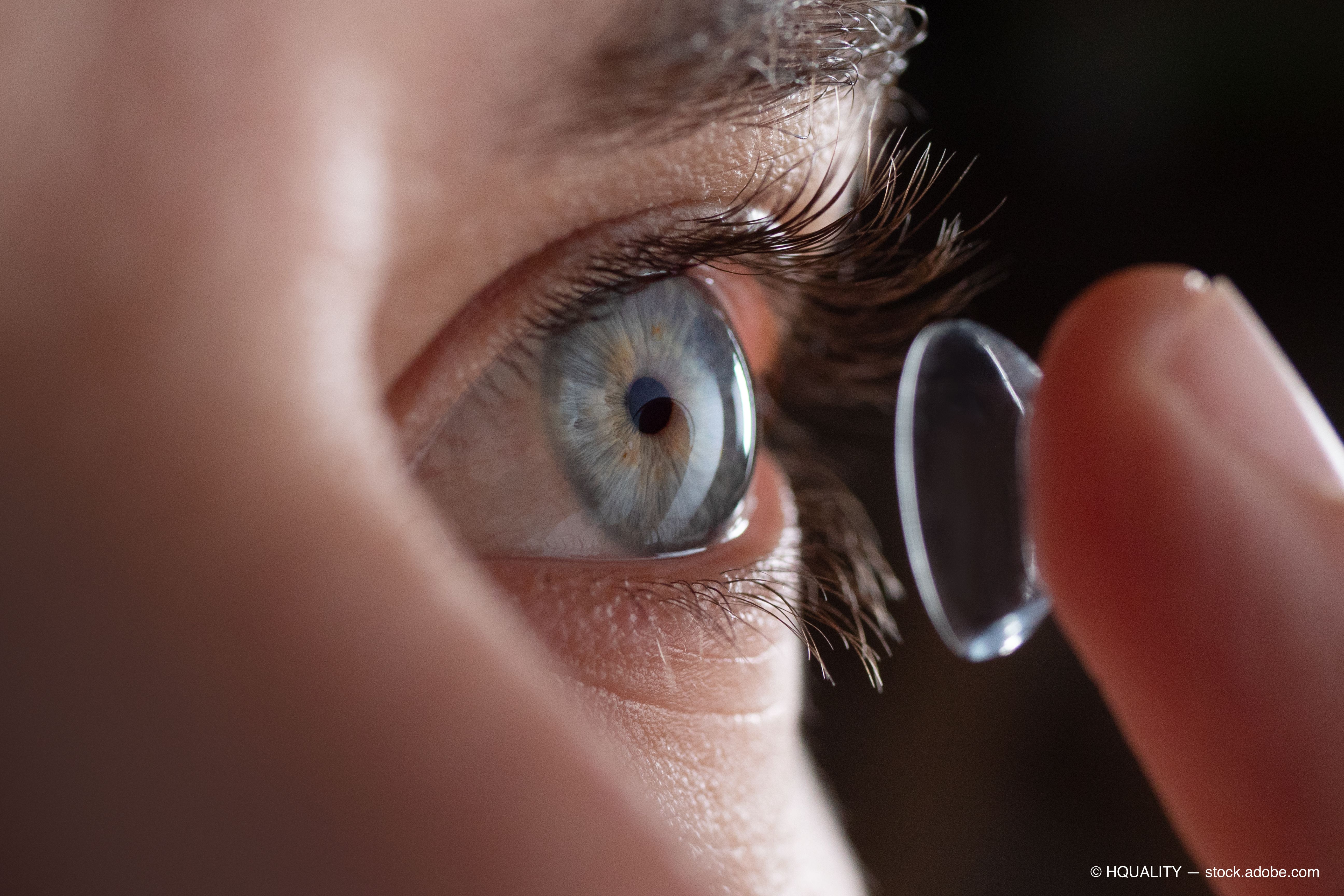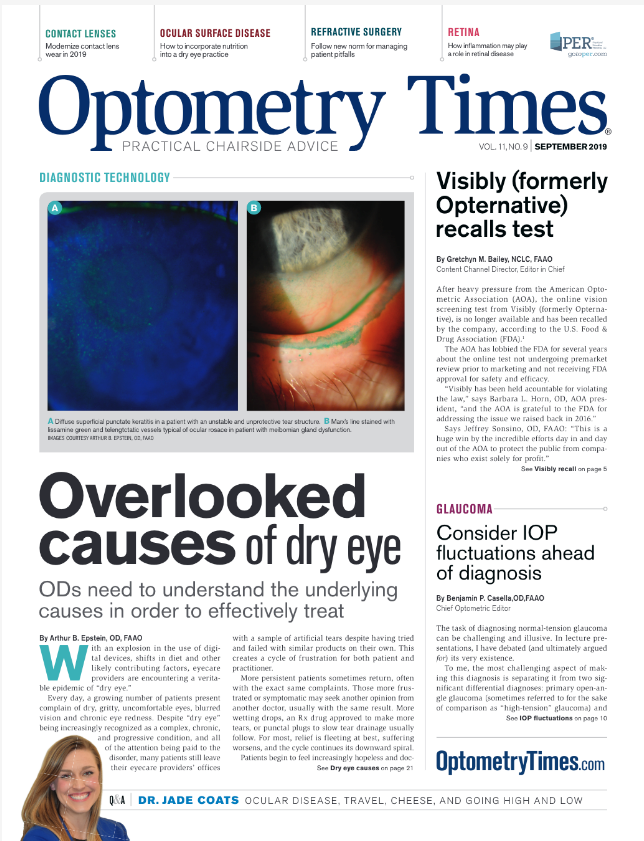Modernize contact lens wear in 2019


While lecturing at SeaVision earlier this year, I found myself sitting in a dining room enjoying the view of the Mediterranean. It was right about then that my colleague reached into each eye to extract a contact lens and place it in her napkin, as if none of the optometrists at the table would notice.
The irony is that I had done the same thing the night before. We sat and marveled at why there are not better lens options for post-LASIK corneas. This evolved into a discussion as to why there are not more toric multifocals, colored torics, or high-oxygen daily disposables in toric or multifocal powers.
The wish list can grow quickly, but let us take a minute to acknowledge and appreciate the latest entries into the contact lens space.
Related: Scleral contact lenses help manage ocular surface disease
Acuvue Oasys with Transitions Light Intelligent Technology
It is not often that a contact lens finds itself on the Time Best Inventions list, but that is exactly what happened in 2018 with Johnson & Johnson Vision’s Acuvue Oasys with Transitions.
Most patients experience strain and discomfort in bright light, but few complain. This is likely because it is expected. One of the conversations in which I come across most emphatically is when I am speaking to patients about prescription sunglasses. I am swinging my hands about explaining that until a patient has experienced being able to see clearly outside without squinting, she just does not know what she is missing. Perhaps the same is true here.
However, because outdoor light sensitivity is expected, there are likely more ocular surface disease (OSD) patients complaining about the lights inside big box stores than the sunlight.
Fortunately, Acuvue Oasys with Transitions work indoors too. Of course, the conundrum is that patients who are that light-sensitive inside may not be able to tolerate contact lens wear of any kind, especially a reusable lens.
Inside Acuvue Oasys with Transitions,1 photochromic molecules are bonded to the lens matrix. The light exposure causes a chemical reaction that changes the physical structure of the molecules, allowing them to absorb visible light.
Related: First impressions of Acuvue Oasys with Transitions contact lenses
Because this lens is not a coating, its effects should endure the two-week wearing period- provided it is stored away from light. The lens blocks up to 15 percent of light in normal indoor conditions and up to 70 percent in outdoor conditions.
While the lens protects the eye by blocking ultraviolet (UV) light, it also has blue light-blocking capabilities and claims to reduce halos and starbursts at night.
Lens darkening begins immediately when exposed to light. The fade to clear occurs within 90 seconds of reducing the stimulus. Photochromic spectacle lenses tend to be influenced by temperature, getting darker when it is cold outside. However, a contact lens is always at the ocular temperature, making the outside temperature irrelevant.
As for the aesthetics of the lens when activated, it is noticeable that the tinted lens overlaps the limbus. Also with light-colored eyes, there is a noticaable but not always dramatic change in the perceived color of the iris.
Acuvue Oasys with Transitions is made of senofilcon A, which has a Dk/t of 147 and water content of 38 percent. The lens is available in an 8.4 mm base curve, 14.0 mm diameter, and powers ranging from -12.00 D to +8.00 D in 0.25 D steps.
Related: Offer more comfort to contact lens wearers
Bausch + Lomb Ultra Multifocal for Astigmatism
Finally, a standard issue multifocal toric contact lens. This lens uses Bausch + Lomb’s 3-Zone Progressive Design to provide presbyopic correction and the company’s OpticAlign design for toric stabilization. These are the same design elements already familiar in Bausch + Lomb Ultra for Presbyopia and Bausch + Lomb Ultra for Astigmatism.2
The lens is made of samfilcon A with MoistureSeal technology, and it has a Dk/t of 163 and water content of 46 percent. Although it is a monthly disposable, it is not yet approved for seven-day extended wear as other Ultra family lenses.
Related: Why ODs shouldn't stop short with patient careBausch + Lomb Ultra Multifocal for Astigmatism is available in a base curve of 8.6 mm and a diameter of 14.5 mm. The powers range from +4.00 D to -6.00 D in 0.25 steps and extend to -9.00 D in 0.50 steps.
Cylinder choices include -0.75 D, -1.25 D, and -1.75 D and axes 10 degrees to 180 degrees in 10-degree steps. The low add covers spectacle add powers +0.75 D to +1.50 D, and the high add is prescribed for spectacle adds of +1.75 D to +2.50 D.2
It’s easy to say “Wow, we need this in a daily disposable.” But it is impressive to see the lens debuted with such expansive parameters and, as always, ODs must embrace the technology present before a company takes the next step toward further specializing a lens. In addition, keeping it as a monthly modality helps control the cost for the patient.
MiSight 1 day
CooperVision’s myopia control soft lens is not yet available in the U.S., but it is already on the shelves in Canada and the UK and multiple countries in Asia and Europe.3 ODs know of the need for retarding myopic progression in youth. Aside from self-image concerns and inconvenience of a large myopic refraction, myopia presents serious pathological consequences such as retinal detachment and glaucoma.4
It is encouraging to see this technology come to market because it will raise awareness among the public and obligation among doctors to take action.
Historical treatments have included atropine, orthokeratology (ortho-K), progressive addition lenses (PALs), or bifocal spectacles. Over the past decade, ODs have also learned that time spent outdoors has an impact on the onset of myopa. Though there is not yet a consensus on the minimum amount of time needed, more time outside is better.4Related: How to control myopia progression in your practice
The lens is designed as a bull’s eye pattern with a distance center and 2.00 D of defocus in the peripheral treatment zone. Some wearers may experience shadowing during adaptation, but it often dissipates in approximately one week.
MiSight is made of omafilcon A-the same material as CooperVision’s Proclear. The high wettability and water content of 60 percent-as well as the daily disposable wear modality-make it an ideal option for fitting pediatric patients.3
This reduces the influence of questionable hygiene habits and over wear. The parameters currently available in approved countries are -0.25 to -6.00 D in 0.25 D steps with an 8.7 mm base curve, 14.2 mm diameter, and 28 Dk/t, and it is sold in a 30-pack.
Conclusion
Each of these contact lens advances warrants a specialty fit. They require ODs to get out of their box and present technology that may take more time to fit, require additional coaching, or be more costly to the patient.
But they are also technologies that can change a patient’s quality of life, both now and for years to come. It is an opportunity for ODs to embrace technology, become early adapters, and differentiate their services to the patient. Set yourself apart by offering your patients the latest technology available.
Read more contact lenses and lens care content
References:
1. Johnson and Johnson Vision. Acuvue Oasys with Transitions Light Intelligent Technology.
Available at: https://www.jnjvisionpro.com/how-transitions-contact-lenses-enhance-visual-comfort?utm_source=acuvue&utm_medium=referral&utm_content=AOWTLP. Accessed 7/24/19.
2. Bausch + Lomb. Contact lens parameters: Prescribe the Bausch + Lomb Ultra family of contact lenses. Available at: https://www.expectultracomfort.com/ecp/lens-parameters. Accessed 7/24/19.
3. CooperVision. MiSight 1 day. Available at: https://coopervision.ca/practitioner/our-products/misight-1-day/misight-1-day. Accessed 7/24/19.
4. Pucker AD. How to build a myopia control practice. Optometry Times. Available at: https://www.optometrytimes.com/practice-management/how-build-myopia-control-practice/. Accessed 8/12/19.

Newsletter
Want more insights like this? Subscribe to Optometry Times and get clinical pearls and practice tips delivered straight to your inbox.